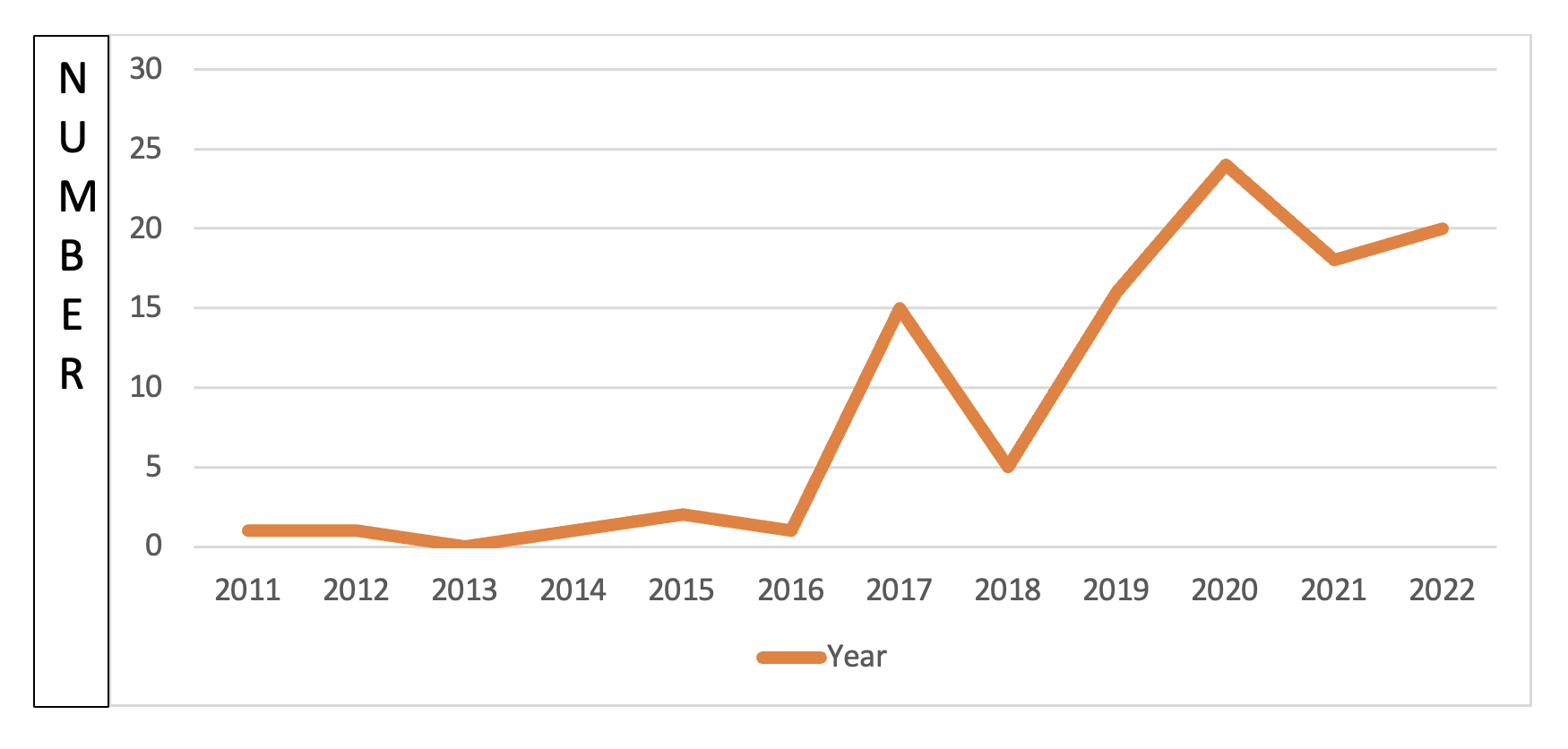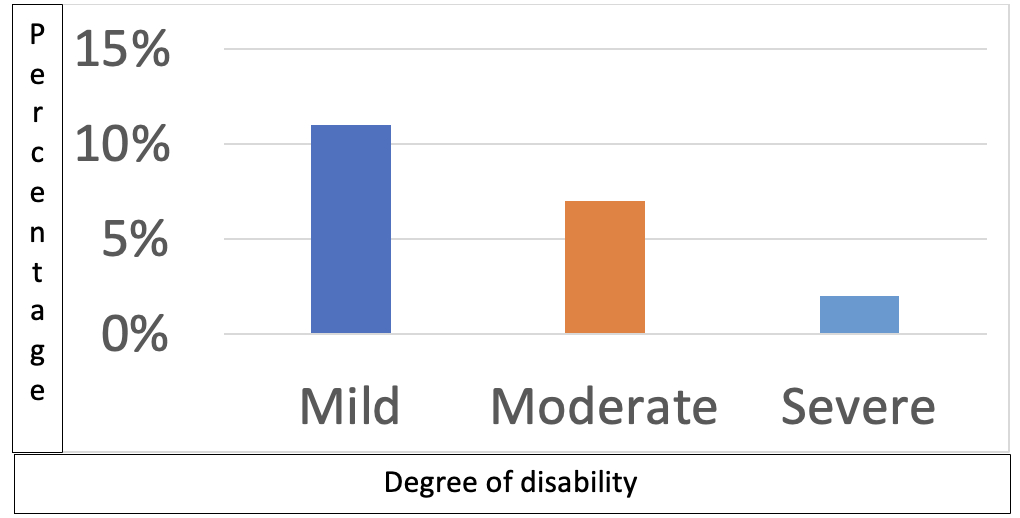Final ID: We128
Effect of Coronavirus Disease 2019 on the Incidence of Stress-induced Cardiomyopathy; A Single Center Experience
Abstract Body: Introduction
Takotsubo Syndrome, or stress-induced cardiomyopathy (SIC) is a transient dysfunction of the left ventricle. Emerging data has shown a rise in the number of cases in recent times. In January of 2020 the Centers for Disease Control and Prevention (CDC) declared Coronavirus disease 2019 (COVID-19) a public healthcare emergency. Given the impact of the COVID-19 on economic and psychosocial factors in individuals across the globe, we sought to study the effect of COVID-19 on the incidence of SIC at our institution.
Research question
Has economic and psychosocial stress associated with COVID-19 led to an increase in the incidence of stress-induced cardiomyopathy?
Aim
To study the impact of COVID-19 on the incidence of stress-induced cardiomyopathy.
Methods
A retrospective review of cardiac catheterization laboratory data was performed from January 2011 to August 2022. We identified a total of (n=121) cases of stress induced cardiomyopathy. Diagnosis was adjudicated based on the findings on cardiac catheterization, left ventriculography, and echocardiography. Clinical and demographic data of interest was obtained from individual patient electronic medical records into a secure database management tool. Additional data of interest was obtained by performing a post-discharge questionnaire via a telephone survey.
Results
The mean age of the population was 69 years (SD± 11.5). 93% (112) of the study population were females. A preceding physical stressor as a triggering factor was present in 59% (72) of individuals, 25% (31) individuals reported a preceding emotional stressor. An increase in the number of cases of SIC was noticed from January of 2020. Only 11% (8) of the patients who were admitted from Janurary 2020 had COVID-19 [Figure 1]. 36% (44) patients participated in the survery. Patients graded their disability from SIC as the following: Mild in 11% (4) , moderate in 7% (3) and severe in 2% (1) of the individuals [Figure 2]. All the patients were referred to Cardiac Rehabilitation at the Medical Center; a American Association of Cardiovascular and Pulmonary Rehabilitation (AACVPR) certified program that provides patients with educational, preventional and rehabilitative resources.
Conclusion
A rise in the incidence of SIC was noted in our single center retrospective study when the CDC declared COVID-19 a healthcare emergency. This suggests an indirect economic and psychosocial stress related process from COVID-19; the "Long COVID" that is not talked about.
Takotsubo Syndrome, or stress-induced cardiomyopathy (SIC) is a transient dysfunction of the left ventricle. Emerging data has shown a rise in the number of cases in recent times. In January of 2020 the Centers for Disease Control and Prevention (CDC) declared Coronavirus disease 2019 (COVID-19) a public healthcare emergency. Given the impact of the COVID-19 on economic and psychosocial factors in individuals across the globe, we sought to study the effect of COVID-19 on the incidence of SIC at our institution.
Research question
Has economic and psychosocial stress associated with COVID-19 led to an increase in the incidence of stress-induced cardiomyopathy?
Aim
To study the impact of COVID-19 on the incidence of stress-induced cardiomyopathy.
Methods
A retrospective review of cardiac catheterization laboratory data was performed from January 2011 to August 2022. We identified a total of (n=121) cases of stress induced cardiomyopathy. Diagnosis was adjudicated based on the findings on cardiac catheterization, left ventriculography, and echocardiography. Clinical and demographic data of interest was obtained from individual patient electronic medical records into a secure database management tool. Additional data of interest was obtained by performing a post-discharge questionnaire via a telephone survey.
Results
The mean age of the population was 69 years (SD± 11.5). 93% (112) of the study population were females. A preceding physical stressor as a triggering factor was present in 59% (72) of individuals, 25% (31) individuals reported a preceding emotional stressor. An increase in the number of cases of SIC was noticed from January of 2020. Only 11% (8) of the patients who were admitted from Janurary 2020 had COVID-19 [Figure 1]. 36% (44) patients participated in the survery. Patients graded their disability from SIC as the following: Mild in 11% (4) , moderate in 7% (3) and severe in 2% (1) of the individuals [Figure 2]. All the patients were referred to Cardiac Rehabilitation at the Medical Center; a American Association of Cardiovascular and Pulmonary Rehabilitation (AACVPR) certified program that provides patients with educational, preventional and rehabilitative resources.
Conclusion
A rise in the incidence of SIC was noted in our single center retrospective study when the CDC declared COVID-19 a healthcare emergency. This suggests an indirect economic and psychosocial stress related process from COVID-19; the "Long COVID" that is not talked about.
More abstracts on this topic:
Are Helpful Kids Healthy Kids? A Systematic Review of Prosocial Behavior in Childhood and Adolescence in Relation to Cardiometabolic Outcomes
Boehm Julia, Qureshi Farah, Woodward Krista, Kubzansky Laura
β-1 Adrenoceptor is Responsible for the Apamin-Sensitive Small Conductance Ca2+-Activated K+ Current Activation in Female Rabbit VentriclesYang Minjing, Zhang Liyang, Kote Anxhela, Tisdale James, Chen Zhenhui, Everett Thomas, Chen Peng-sheng, Liu Xiao


